Living
Everyone Mistakenly Puts These Foods in The Fridge

We all rely on our refrigerators to keep our food fresh and tasty. They help prevent spoilage and preserve the flavors we love. However, there are some common misconceptions about what should and shouldn’t go in the fridge. Many of us unknowingly store things in the wrong places, like condiments and fruits that don’t actually need to be cold.
In this article, we’ll uncover the truth about what items should and shouldn’t be stored in the refrigerator. We’ll explain it all in simple terms, so you can make smart choices about where to keep your everyday items. Let’s dive in and learn the real facts behind refrigerator storage, and how it can help keep your food at its best.
Avocados Like To Ripen In The Warmth

Avocados, known for their buttery texture and vibrant green flesh, have become a staple in many kitchens. But did you know that refrigerating avocados can hinder their ripening process and affect their flavor?
Avocados are climacteric fruits, which means they continue to ripen after being harvested. This ripening process is driven by an enzyme called ethylene, which is released naturally by the fruit. Refrigeration suppresses the production of ethylene and slows down the ripening process, leading to dull, underdeveloped avocados.
Moreover, low temperatures in refrigerators can cause the avocado’s delicate flesh to become rubbery and adversely affect its taste. Cold air can also penetrate the fruit, leading to undesirable texture changes and potential moisture loss.
To ensure optimal ripening and flavor, store unripe avocados at room temperature until they reach the desired ripeness. Once ripe, they can be refrigerated for a few days to prolong their shelf life. By keeping avocados out of the fridge until they are ripe, you can enjoy their creamy goodness at its very best.
An Apple A Day Keeps The Fridge Away
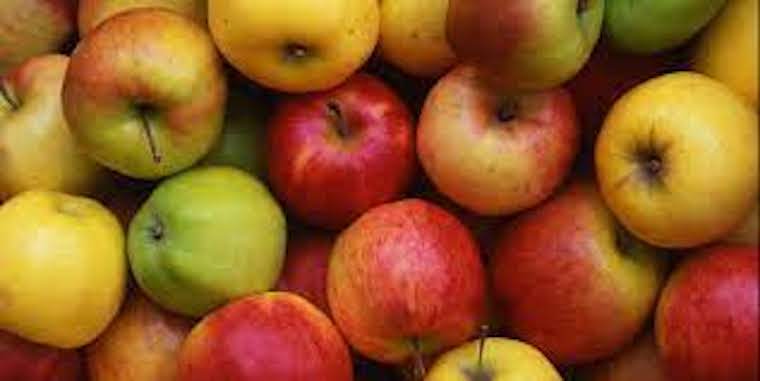
Apples, with their crispness and juicy goodness, are a popular fruit. But did you know that refrigerating apples can compromise their texture and taste? Refrigeration can cause apples to lose moisture, resulting in a mealy and less enjoyable eating experience. The cold air can also affect the natural balance of flavors, diminishing the vibrant and crisp taste we associate with fresh apples.
To maintain optimal quality, store apples at room temperature in a cool, well-ventilated area, away from direct sunlight. If you have a large quantity of apples, consider storing them in a cool cellar or pantry. By keeping apples out of the fridge, we can preserve their natural texture, flavor, and crunch, ensuring a delightful snacking experience.
Display These Bright Fruits On A Table (not in the fridge)

Citrus fruits, like oranges and lemons, bring a burst of tangy flavor and refreshing zest to our meals and beverages. Citrus fruits have a unique structure and composition. When exposed to cold temperatures, the delicate membranes that hold the fruit’s juice can become damaged, leading to a loss of juiciness and texture. Moreover, refrigeration can cause the fruit to dry out, resulting in a less enjoyable eating experience.
Additionally, the low humidity within the fridge can accelerate the breakdown of vitamin C in citrus fruits. Vitamin C is an essential nutrient that contributes to our overall health and immune system function. To retain the maximum vitamin C content, it’s best to store citrus fruits at room temperature.
By storing citrus fruits in a cool, well-ventilated area away from direct sunlight, we can prolong their freshness and preserve their vibrant flavor. Let’s embrace the natural resilience of citrus fruits and relish their juicy goodness by keeping them out of the fridge, ensuring each bite is a refreshing and invigorating delight.
Chocolate Is Best In The Pantry

Chocolate, with its delectable taste and creamy texture, is a beloved treat enjoyed by many. But did you know that refrigerating chocolate may not be the best choice? Contrary to popular belief, storing chocolate in the fridge can actually have a negative impact on its flavor and texture. Let’s explore the science behind it.
When chocolate is exposed to cold temperatures, it undergoes a process called “chocolate bloom.” This occurs when moisture condenses on the surface of the chocolate, leading to a dull, whitish appearance. While it is safe to consume, bloomed chocolate loses its smoothness and becomes less appealing.
Furthermore, refrigeration can also cause chocolate to absorb odors from other foods, altering its taste. The cool, moist environment can introduce unwanted flavors, compromising the rich and distinctive character we love in chocolate.
To maintain the quality of your chocolate, store it in a cool, dry place at a consistent temperature between 60°F and 70°F (15°C and 21°C). A pantry or cupboard away from direct sunlight is an ideal spot. By doing so, you can savor the true essence of your favorite chocolate treats, ensuring a delightful and unblemished indulgence every time.
Tomato Flavor Dulls In The Fridge
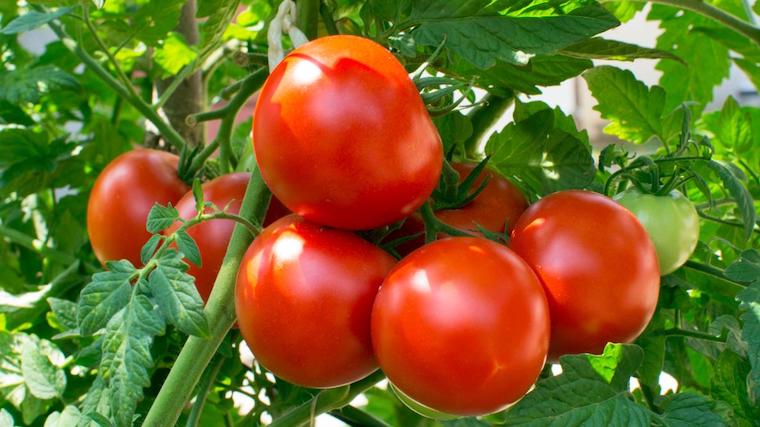
Tomatoes, with their vibrant colors and juicy flesh, are a versatile ingredient enjoyed in various dishes. However, did you know that refrigerating tomatoes can negatively impact their flavor and texture?
Tomatoes are highly sensitive to temperature changes, especially when exposed to cold environments. Refrigeration can cause the tomato’s delicate cell structure to break down, resulting in a mealy texture and loss of their characteristic juiciness. The cool temperature also hampers the natural ripening process, leading to a less flavorful tomato.
The cold environment of the fridge can affect the tomato’s flavor profile. Low temperatures can inhibit the production of volatile compounds responsible for their rich taste and aroma, resulting in a blander eating experience.
These Tear-Inducing Flavor Bombs, Would Rather Not Mingle With The Cold Crowd
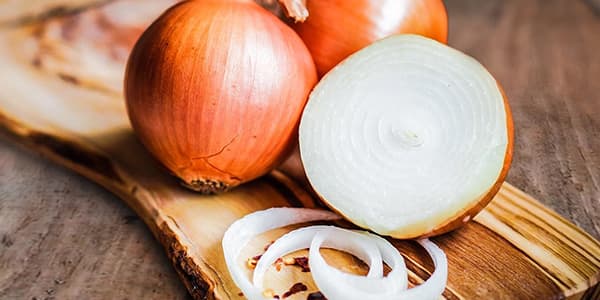
Onions prefer to show off their pungent personalities when stored at room temperature. While it may seem intuitive to store onions in the fridge, doing so can actually compromise their texture and taste.
Onions are sensitive to moisture and cold temperatures. Refrigeration exposes them to excess moisture, leading to a higher likelihood of mold and decay. The cool environment of the fridge can also cause onions to become soft and mushy, diminishing their natural crunch and texture.
Additionally, onions have a natural tendency to absorb odors from their surroundings. Placing them in the fridge alongside other strong-smelling foods can result in an undesirable taste transfer, affecting the overall flavor of the onions.
Ah, The Versatile Eggs!

Eggs, a breakfast staple, provide us with a nutritional boost and culinary possibilities. While it may seem logical to store eggs in the fridge, refrigeration is not always necessary.
Eggshells are porous, allowing for the exchange of gases. When eggs are refrigerated, condensation can form on the shell’s surface, making it easier for bacteria to penetrate. The cold temperature inside the fridge can cause flavor absorption, exposing eggs to odors from other foods.
Interestingly, eggs come with a natural protective coating called the “bloom” or cuticle, which helps seal the shell and preserves freshness. Refrigeration can wash away this protective layer, making eggs more susceptible to contamination.
To maximize the quality and shelf life of eggs, store them in a cool, dry place, ideally in their original carton. This allows them to maintain their natural freshness and protective bloom. By adopting conservational storage practices, we can enjoy eggs that retain their flavor, nutritional value, and versatility in various culinary creations.
Sweet, Golden Honey—The Nectar Of The Gods—Has No Need For Refrigeration
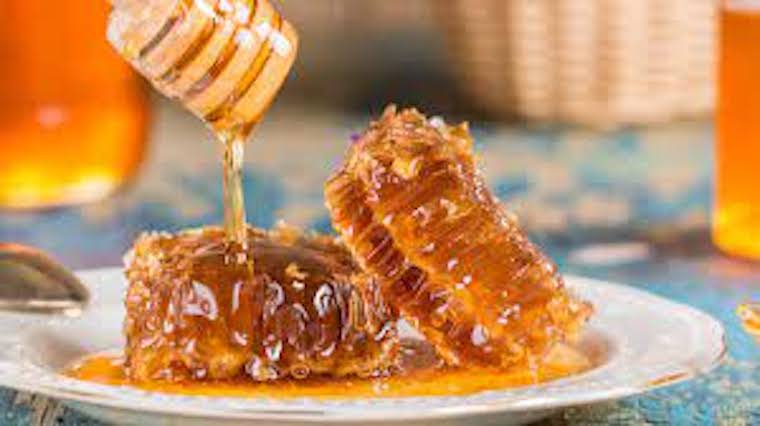
Honey, a natural sweetener cherished for its golden hue and rich taste, holds a special place in our kitchens. However, refrigerating honey may not be the best way to preserve its quality and deliciousness.
Honey is a natural preservative. It has a low moisture content and a high sugar concentration, creating an environment that is unfavorable for bacterial growth. Refrigeration can introduce moisture, leading to potential fermentation and spoilage.
Moreover, cold temperatures cause honey to thicken and crystallize, making it harder to scoop and enjoy. While crystallization is a natural process, refrigeration accelerates this transformation, altering the texture and consistency of honey.
To keep honey fresh and flowing, store it in a cool, dry place at room temperature. Ensure the container is tightly sealed to prevent moisture absorption.
Don’t Jam This Item In The Fridge
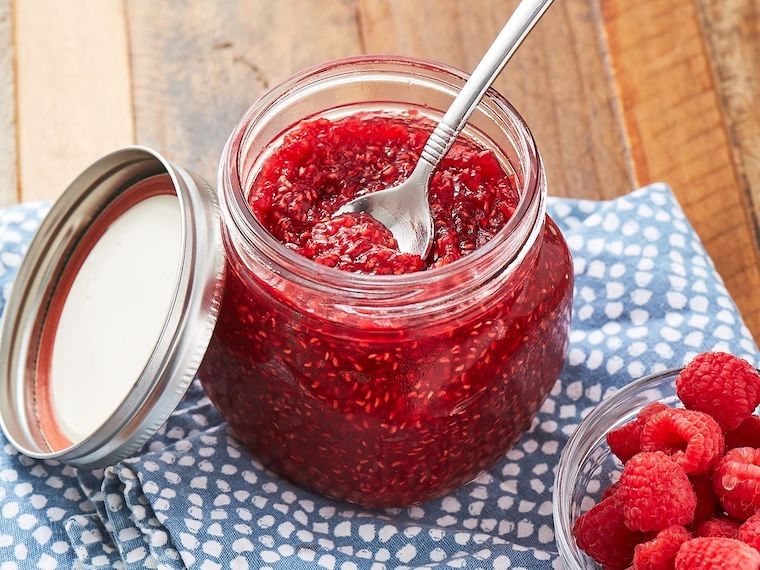
Jam, a delightful spread bursting with fruity flavors, adds a touch of sweetness to our breakfasts and desserts. While it may seem logical to store jam in the fridge, refrigeration is not essential for its preservation.
Jam contains high levels of sugar, acting as a natural preservative. This high sugar content creates an inhospitable environment for bacterial growth, ensuring the long-term safety of the product. Refrigeration is unnecessary for maintaining the freshness and quality of properly sealed jam.
Additionally, cold temperatures can cause the jam to solidify and lose its spreadable consistency. The cool environment of the fridge can also lead to moisture absorption, compromising the texture and taste of the jam.
To keep jam at its best, store it in a cool, dark pantry or cupboard, away from direct sunlight and excessive heat. Ensure the jar is tightly sealed to prevent air exposure.
Cucumbers Don’t Like To Be Kept Cool
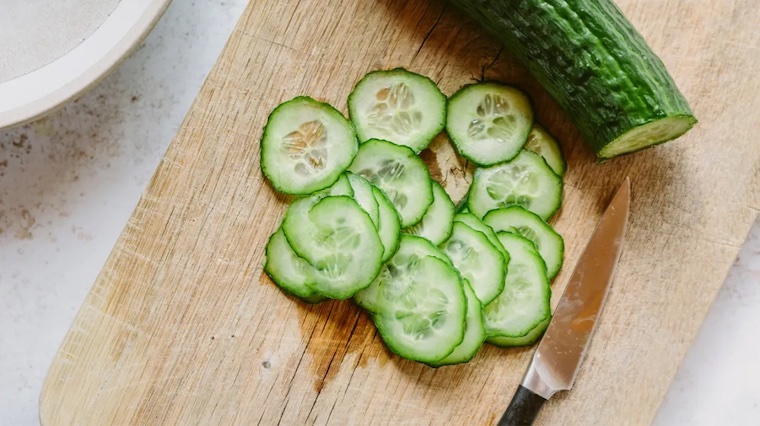
Crisp, cool, and oh-so-refreshing, cucumbers are a popular addition to salads and sandwiches. Cucumbers are composed mostly of water, making them sensitive to cold temperatures. Refrigeration can cause the cucumber’s cells to break down, resulting in a soggy and wilted texture. The cool environment of the fridge can also accelerate moisture loss, leading to dehydration and a loss of freshness.
Moreover, cucumbers are known for their natural defense mechanism: an enzyme called “pectinase.” When exposed to temperatures below 50°F (10°C), this enzyme becomes active and can cause the cucumber to become soft and mushy.
To maintain the optimal texture and taste of cucumbers, store them in a cool, dry place away from direct sunlight. If needed, wrap them loosely in a cloth or paper towel to absorb excess moisture.
Ketchup Belongs In The Pantry

Ketchup, the trusty sidekick of fries and burgers, holds its own without refrigeration. Its tangy goodness and vibrant red color are ever-ready to add that extra zing to your favorite meals. It’s time to set ketchup free from the clutches of the fridge!
Garlic Thrives On Your Countertop
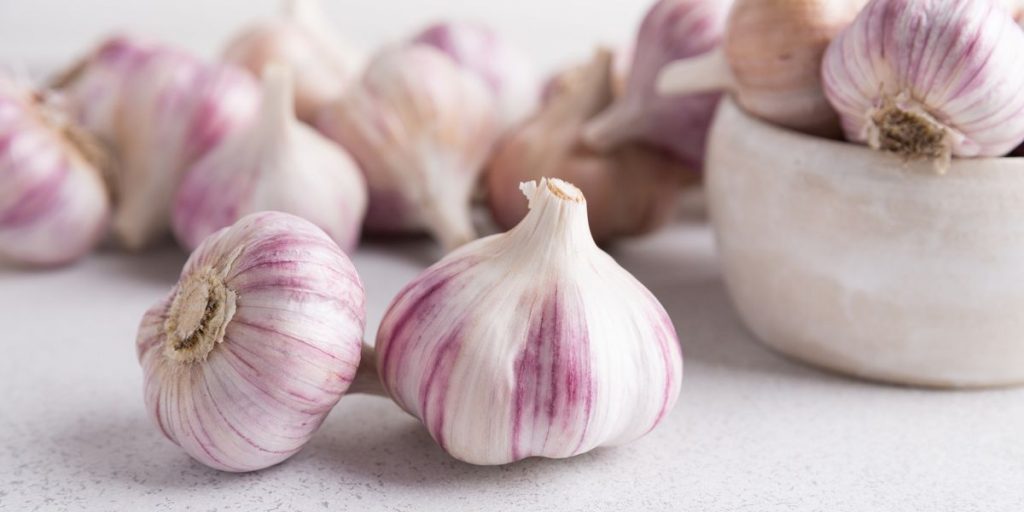
Garlic, the vampire’s worst nightmare and the chef’s best friend, loves to hang out on the countertop. Its powerful aroma and zesty kick bring life to any dish. No need to lock this flavor powerhouse in the fridge—it enjoys its independence!
Sitting Alongside Ketchup Outside Of the Fridge Is Mustard
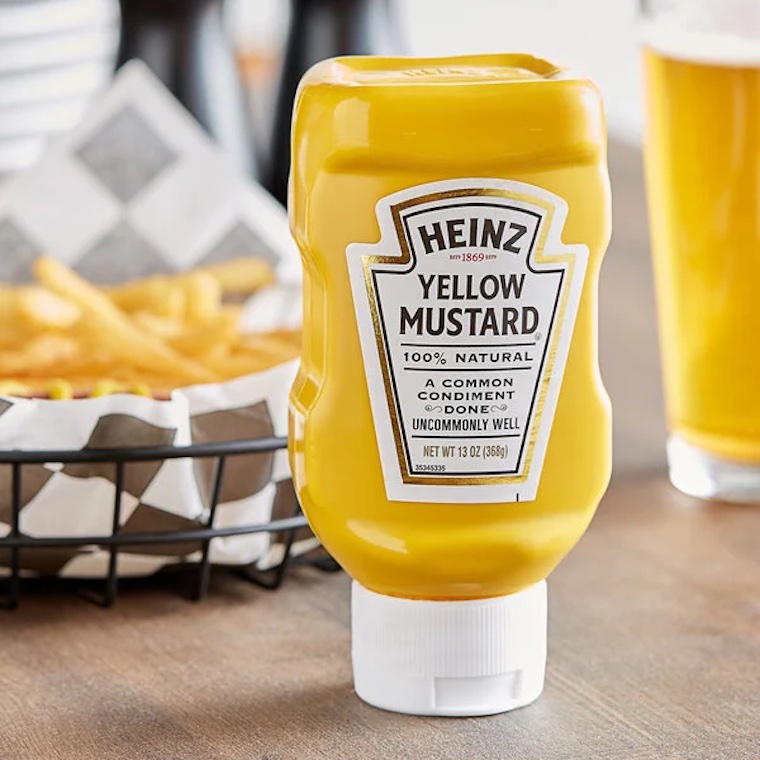
Oh, mustard, the golden warrior of condiments, doesn’t mind a little warmth. It’s ready to add a tangy twist to your sandwiches and hot dogs, even without the icy embrace. Let it break free and show its true colors!
Pickled Pickles In the Pantry
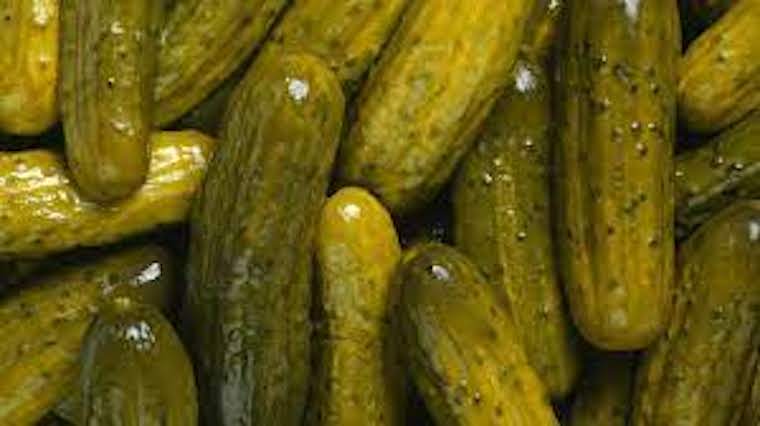
Pickles, the zingy cucumbers that took a flavorful plunge, are happy as can be outside the fridge. Their crisp texture and sour punch can brighten up any meal. So keep them out, and they’ll be your crunchy companions!
Banana’s Do Best On Your Shelf

Bananas, those sunny companions of joy, prefer to stay out of the frosty limelight. With their vibrant yellow hues and buttery-soft texture, they add a touch of tropical zest to your day. So let them roam free, unburdened by the chilling embrace of the fridge.
Keep This One At Room Temperature Please
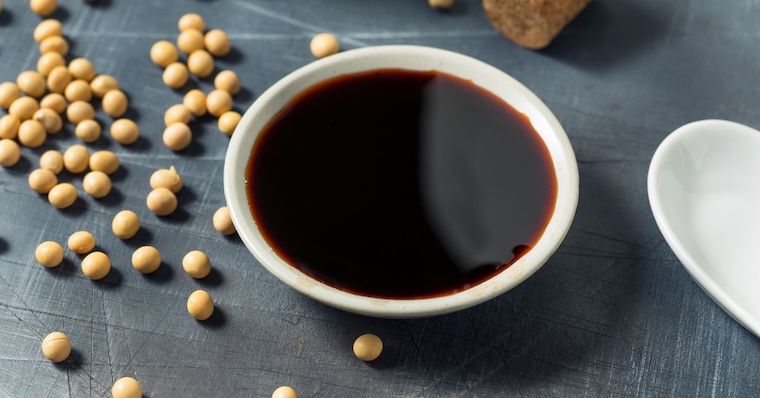
Soy sauce, the dark knight of umami, doesn’t need the cold shoulder. Its savory depth and salty splendor enhance stir-fries and sushi rolls alike. Let it flow freely from its bottle—no fridge time required!
Olive Oil Shines Outside Of The Fridge

Olive oil, the liquid gold of the Mediterranean, isn’t fond of frosty environments. Its rich flavors and silky texture shine when stored in a cool, dark pantry. Let it be the shining star of your dressings and culinary creations!
Keep This Spicy Peppers In The Warmth
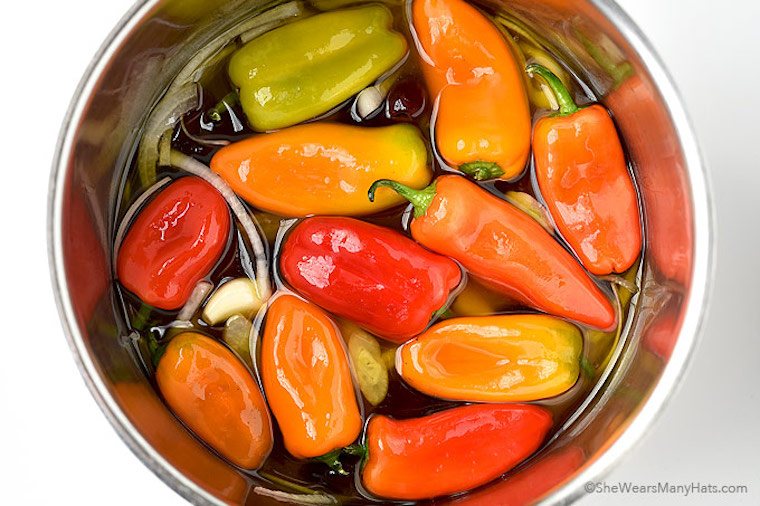
Spicy, tangy, and full of personality, pickled peppers are the life of the party. They revel in their jar, bursting with flavor and ready to spice up your sandwiches and nachos. No fridge chains can contain their fiery spirit!
Keep These Accessible And Ready To Munch
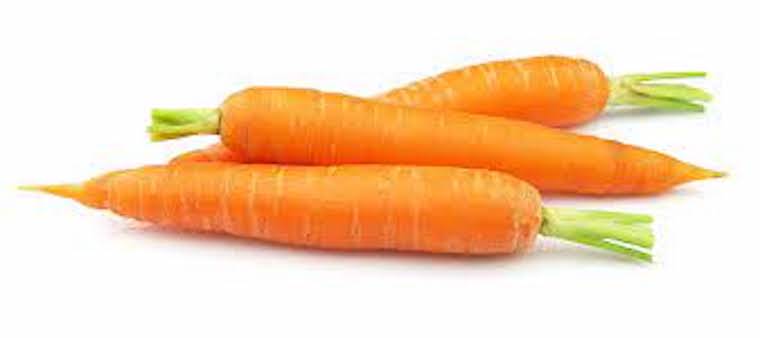
Carrots, those vibrant orange wonders, prefer the crispness of the kitchen counter. Their natural sweetness and satisfying crunch make them a perfect snack or a colorful addition to your salads.
Ah, The Tantalizing Taste Of The Tropics

Fruits like mangoes, pineapples, and papayas prefer the warm embrace of your countertop. Their juicy goodness and vibrant colors bring a slice of paradise to your day. Keep them outside the fridge to enjoy their exotic allure!
Creamy Or Crunchy, Peanut Butter Doesn’t Mind A Little Warmth
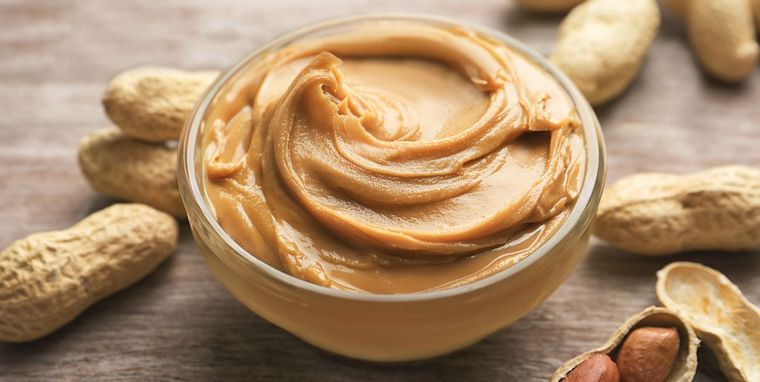
This nutty spread sticks to its principles even outside the fridge. Slather it on toast, mix it in smoothies, or enjoy it straight from the jar—the choice is yours!
Bread Enjoys A Cozy Spot On Your Kitchen Counter

Its soft, pillowy goodness is at its best when kept at room temperature. Savor the aroma as you slice into a fresh loaf and let your taste buds rejoice!
Let These Melons Mellow
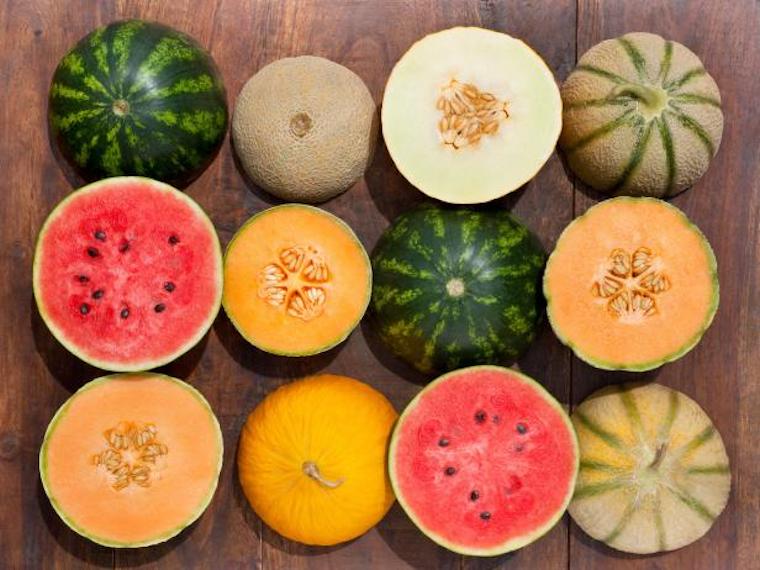
Watermelons, cantaloupes, and honeydews—they’re the refreshing kings of summer. These juicy orbs thrive outside the fridge, ripening into succulent delights. Take a bite and let the sweet juices burst forth, quenching your thirst in the most delightful way!
Pears Do Best In Plain Sight

Pears, the elegant and juicy fruits, are at their peak when given a little freedom. Let them grace your countertop, turning from firm to juicy perfection. Sink your teeth into their delicate flesh and experience a symphony of flavors!
Flour, The Versatile Foundation Of Baking, Doesn’t Need To Chill Out

Keep it in a dry and cool pantry to maintain its powdery perfection. Let it unleash its magic as you create fluffy cakes, crispy cookies, and delectable pastries!
Potatoes Thrive In A Dark And Dry Environment

The fridge’s cold air can turn their starchy insides into an undesirable texture. Keep them cool but not chilly, and they’ll be ready to transform into comforting mashed potatoes or crispy fries!
Tuna Doesn’t Need To Hang Out With The Cold Crowd
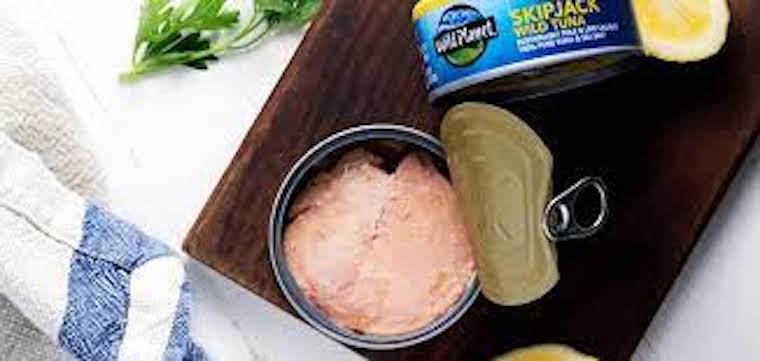
Canned tuna is sealed tight and ready to go, making it a convenient and tasty addition to your meals. Whip up a tuna salad or create mouthwatering sandwiches—it’s time to ride the wave of flavor!
Breakfast Warriors, Rejoice!

Cereal is a champion outside the fridge. Whether you enjoy it with milk or as a dry snack, its crispy goodness remains intact. No need to send it to the chilly land—keep it at arm’s reach for a quick and tasty morning fuel-up!
Pumpkins – Whether Carved Or Not – Like To Be Out In The Open
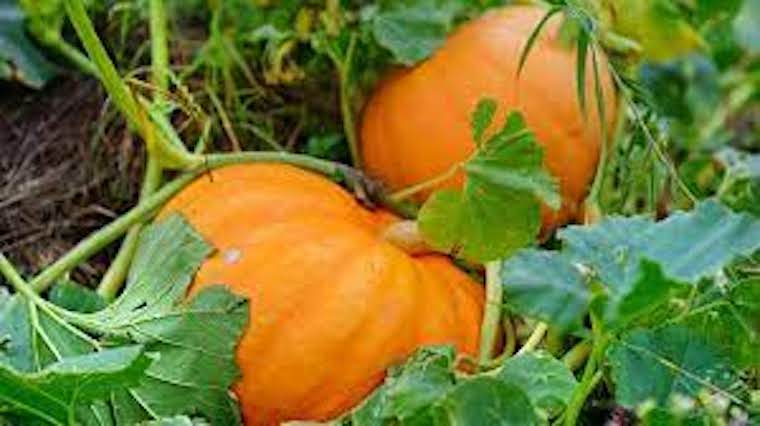
Pumpkins, the symbols of fall, prefer to strut their stuff on the countertop. Their vibrant colors and earthy sweetness make them a centerpiece of autumn feasts. Embrace the season and let the pumpkin’s warmth fill your kitchen with cozy vibes!
Cold Spices Are A No-No

Spices, those flavor-packed superheroes, don’t need refrigeration to save the day. Their vibrant colors and aromatic wonders are best preserved in a cool, dark pantry. Keep them at your fingertips, ready to add a pinch of magic to your culinary creations!
Eggplant Should Be Planted Right On Your Counter

Eggplant, the purple beauty of the vegetable kingdom, loves to soak up the spotlight outside the fridge. Its firm and glossy skin holds the promise of savory wonders. Grill it, roast it, or turn it into a creamy dip—it’s at its best when it can show off its rich flavors without the chilling interference.
The Tropical Royalty Known As Pineapple!

This spiky delight doesn’t need a cold throne to rule. Its vibrant yellow flesh, bursting with juicy sweetness, keeps its sunny personality intact when left outside the fridge. Slice it up for a refreshing treat or add it to your favorite dishes for a tangy twist!
Living
Glasgow’s First Tree Hugging Tournament Aims to Bring People Closer to Nature
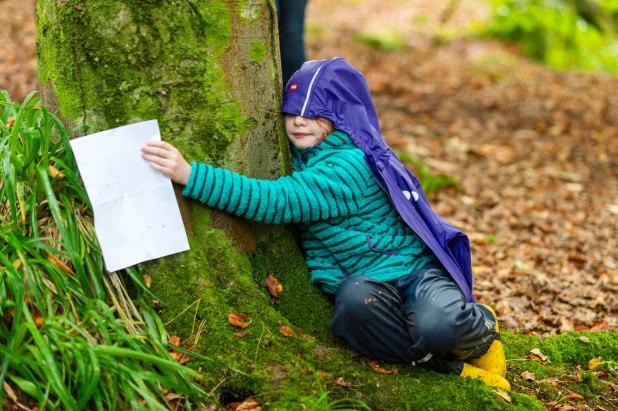
In a shady clearing at Dams to Darnley Country Park, Hannah Willow, barefoot and clutching twigs and leaves, gently approached a towering tree. After gracefully circling it, she wrapped her arms around its wide trunk, resting her cheek against the rough bark.
Willow, a 36-year-old teacher and children’s book author, was crowned the champion tree hugger at Glasgow’s inaugural Tree Hugging Tournament. The event, organized just outside the city, was designed to help people reconnect with nature in what organizers called a “playful and heartfelt way.”
“I’m over the moon,” Willow said, adorned with her leaf-and-branch crown. “I’ve always been a bit of a tree hugger, so being here with others who feel the same is wonderful. The woods are truly where I feel at peace.”
About 15 adults and four children participated in the event, which draws inspiration from Finland’s World Tree Hugging Championships. As the weekend’s champion, Willow earned a spot in the international competition, held in the HaliPuu forest, just north of the Arctic Circle.
The global competition was established in 2020 to lift spirits during the pandemic and encourage people to reduce stress by spending time in forests. Since then, similar events have sprouted worldwide, including Glasgow’s tournament and another in the Scottish Highlands.
Shuna Mercer, 50, and Vicki Dale, the organizers, emphasized the mental health benefits of nature. Mercer, an outdoor play therapist, explained, “We wanted to raise awareness about how vital it is to reconnect with the natural world. With so much time spent on screens, people are missing out on the emotional benefits that come from being outdoors.”
The tournament consisted of three rounds. In the first, participants competed in speed hugging, where they hugged as many trees as possible in one minute, ensuring each hug lasted at least five seconds. The second round, “dedicated” hugging, focused on showing deep connection and respect to a single tree. The final freestyle round allowed competitors to express their creativity through their most unique and personal tree hug.
Vicki Dale’s daughter, Lottie, won the children’s category. Wearing a pink raincoat and green boots, she set up a whimsical tea party with her teddy bear, Tom, and a gnarled tree, which she lovingly referred to as the “twirly tree.” Lottie also read a poem during the dedicated hug, saying, “I chose this tree because it stood out to me. It’s important for kids to connect with nature, and I love spending time in the woods with my mom.”
As for Willow, she’s now preparing to compete in Finland next summer. When asked for her advice on tree hugging, she shared, “It’s all about intention. Trees are living beings, just like us. When you give them a bit of love, it’s a beautiful thing.”
Living
Swiss Innovation: Revolutionizing Chocolate Production with Whole Cocoa Fruit
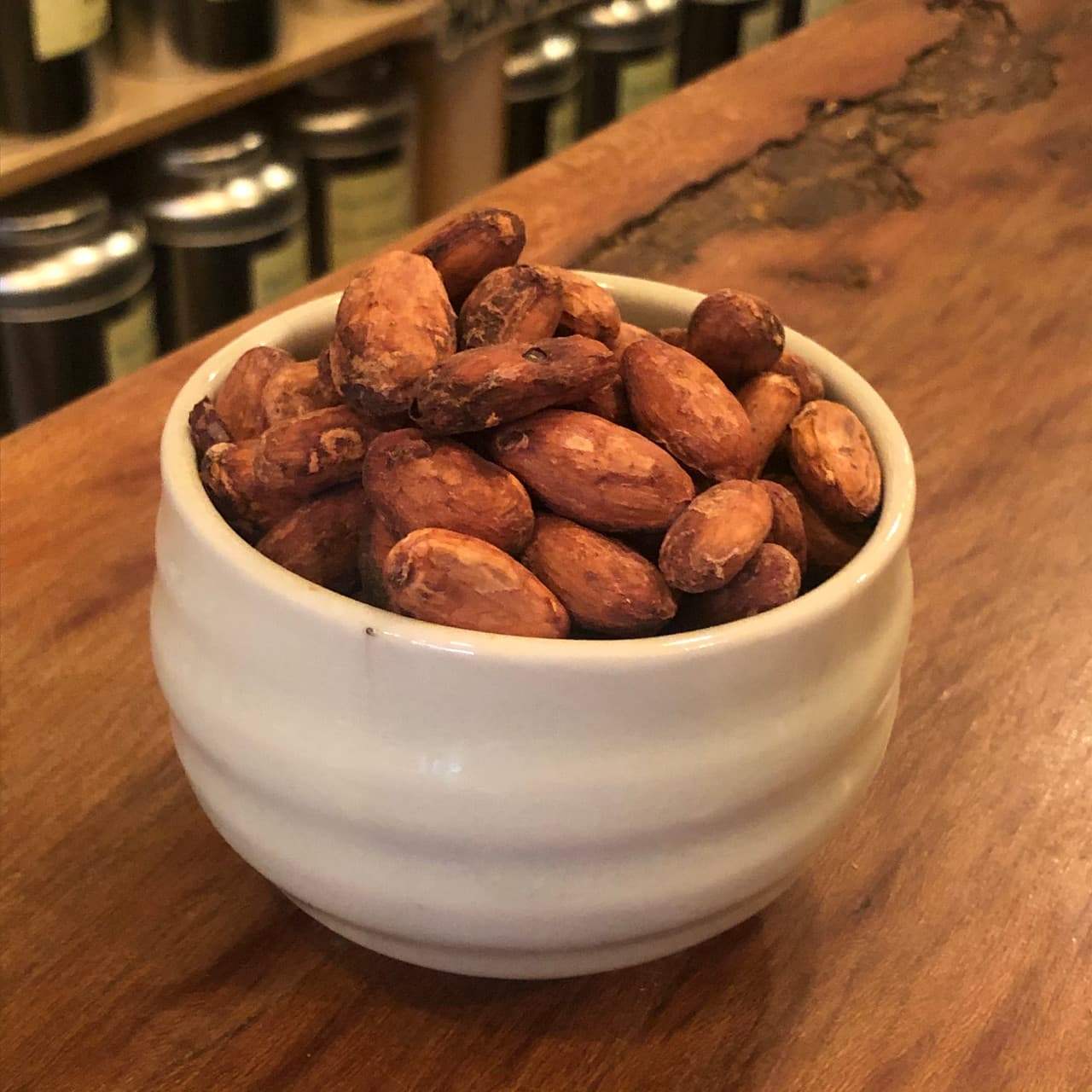
A groundbreaking development in chocolate production has emerged from Switzerland’s Federal Institute of Technology in Zurich. Food scientist Kim Mishra and his team have created a method to manufacture chocolate using the entire cocoa fruit, not just the beans, while eliminating the need for added sugar.
This innovative approach addresses several issues in the chocolate industry, including sustainability and farmer welfare. Traditionally, chocolate production discards most of the cocoa fruit, wasting valuable resources. The new method utilizes the fruit’s sweet juice, pulp, and even the husk to create a naturally sweet cocoa gel, potentially revolutionizing the industry.
The process has attracted attention from sustainable food companies and could solve multiple problems faced by the cocoa industry. Anian Schreiber, co-founder of KOA, a Swiss startup involved in the project, believes this approach could increase income for cocoa farmers and create more value in cocoa-producing countries.
This development comes at a time when the chocolate industry is under scrutiny for its historical links to colonialism and ongoing issues such as child labor and deforestation. The new method could contribute to more ethical and sustainable chocolate production.
The chocolate produced by this method has been described as having a rich, dark, yet sweet flavor with a hint of cocoa bitterness. However, challenges remain, including potentially higher production costs due to the current subsidies for sugar production.
Despite these hurdles, interest in the new method is growing. Chocolate producers from various cocoa-growing countries have reached out to learn more about the technique. Some major Swiss producers are beginning to incorporate more of the cocoa fruit in their processes, though none have yet eliminated sugar entirely.
As the Swiss chocolate industry, which produces 200,000 tonnes of chocolate annually worth an estimated $2 billion, looks to the future, this innovation could play a significant role in ensuring sustainability while maintaining Switzerland’s reputation for exceptional chocolate.
The development represents not just a potential shift in chocolate production, but also a step towards more sustainable and ethical practices in the food industry as a whole.
Living
Ukraine’s New Generation of Pet Owners: Finding Hope and Healing Through Animal Adoption

In the wake of Russia’s invasion of Ukraine, a heartening trend has emerged among the country’s younger generation. Millennials and Gen-Z Ukrainians, many of whom previously hesitated to take on the responsibility of pet ownership, are now stepping up to adopt animals displaced by the conflict. This wave of compassion is particularly evident in Kyiv, where the canine population now includes many furry friends with poignant wartime backstories.
This article highlights several touching tales of adoption:
Olena, a 30-year-old entrepreneur, found an instant connection with Chara, a dog rescued from Izium in the Kharkiv Region. Their bond formed quickly, creating a new family unit.
Daria, 31, welcomed Amelie, a cocker spaniel discovered near the Belarusian border by her boyfriend during a military mission. Amelie’s rescue fulfilled Daria’s long-held desire to help an animal in need.
Nastia, a 32-year-old designer with roots in conflict-affected regions, found solace in Spike, a mixed-breed dog from the Donetsk region. Their relationship has brought joy amidst Nastia’s experiences with displacement.
Vitalii, 33, and his wife Julia adopted Dyvo (meaning “Miracle” in Ukrainian), a puppy who overcame severe illness. For Vitalii, this marked his first deep connection with an animal, becoming a source of healing.
Costya, 34, and his girlfriend chose Runa from a shelter in Vasylkiv, appreciating the organization’s approach to reducing animal stress through temporary home placements.
Oleh and Lika, a creative couple, brought Maoshinda, a Ukrainian Laika, into their lives, overcoming initial hesitations about pet ownership.
Anya, 22, found companionship in Luna, a street dog who lost her puppies, filling a void left by wartime disruptions.
Max, 33, adopted Chief, a dog rescued from the Donetsk region, learning to navigate the challenges of pet ownership, including separation anxiety.
Olga and Andrii’s adoption of Sirko, a husky rescued from Irpin, prompted Olga’s return to Ukraine from Berlin, symbolizing a deeper commitment to their home during uncertain times.
These stories collectively illustrate how adopting animals affected by war has not only provided homes for displaced pets but also brought healing, purpose, and renewed hope to their human companions during a challenging period in Ukraine’s history.
Living
Breakthrough in Maugean Skate Conservation: First Captive-Born Hatchling Thrives

Scientists at the University of Tasmania’s Institute of Marine and Antarctic Studies (IMAS) are celebrating a significant milestone in their efforts to save the endangered Maugean skate. The captive breeding program, initiated in December, has produced its first hatchling from an egg laid in captivity.
Professor Jayson Semmens, who leads the project, expressed enthusiasm about this development, noting its importance in validating the program’s scientific approach. The success comes at a crucial time, as recent studies have shown a dramatic decline in the skate population in its last known habitat, Macquarie Harbour on Tasmania’s west coast.
The breeding program has seen remarkable progress since its inception. A female skate brought into captivity has been consistently producing eggs, with over 100 laid so far and about 70 showing signs of embryonic development. The first healthy female hatchling emerged on July 10, with more expected soon.
Interestingly, the eggs are being fertilized using sperm stored by the female from previous mating in the wild, as the captive male was initially kept separate to avoid disturbing the laying process. Scientists are now observing the interactions between the adult skates in captivity.
The program has evolved rapidly, moving from basic care of skates and their eggs to successfully nurturing embryos into viable hatchlings. While there have been challenges, including the loss of two adult skates early in the program, these setbacks have led to improved screening and care protocols.
Looking ahead, researchers are focusing on developing strategies for successfully reintroducing captive-bred skates into the wild. Macquarie Harbour’s unique environmental conditions, including naturally low oxygen levels, present specific challenges that need to be addressed.
The Tasmanian government has incorporated the captive breeding program into a broader conservation action plan for the Maugean skate. However, environmental groups stress the need for urgent attention to the root causes of the harbour’s poor water quality, particularly citing concerns about the impact of salmon farming.
Despite these challenges, the scientists involved in the project express a sense of privilege in their work to preserve this endangered species, viewing each day with the skates as a special opportunity to contribute to conservation efforts.
Living
Centennial Celebration: World Unites to Honor RAF Veteran with Flood of Birthday Wishes

A heartwarming global response marked the 100th birthday of Richard ‘Dick’ Skepper, a former Royal Air Force (RAF) serviceman. Following an appeal by the RAF Association, Skepper’s Warwickshire home was inundated with birthday cards from well-wishers worldwide, creating an unforgettable centennial celebration.
The outpouring of support left Skepper deeply moved. His son, David, shared that the cards came from an incredibly diverse range of senders, spanning multiple generations and continents. The family was amazed to see postmarks from as far as Australia and the Americas, alongside numerous European countries.
David emphasized how touched his father was by the thoughtfulness evident in each card. The veteran took the time to read every message, marveling at the variety of designs and their far-flung origins. While individual acknowledgment of each sender isn’t feasible, the family expressed profound gratitude for the joy these gestures brought to Skepper’s milestone birthday.
The centenarian’s military service began at 18 when he joined the RAF, eventually serving with 7 Squadron under Bomber Command at RAF Oakington in Cambridgeshire. His role as a Flight Mechanic – Engines (FM1) was crucial to the war effort.
To commemorate this special occasion, Skepper enjoyed a garden party at his nursing home, Kinton Manor, surrounded by loved ones. The global card-sending initiative not only honored his past service but also created new, cherished memories as he enters his second century of life.
This outpouring of international support demonstrates the enduring respect for veterans and the power of community to create meaningful celebrations across borders.
-

 OMG6 years ago
OMG6 years agoA Couple Gave Birth to the Most Beautiful Twins Ever
-

 OMG7 years ago
OMG7 years ago20 Rare Historical Photos
-

 OMG6 years ago
OMG6 years agoHilarious Airport Photos
-

 Cute6 years ago
Cute6 years agoMom Refuses to Let Daughter Eat Sugar and Years Later This is What She Grows Into
-

 OMG6 years ago
OMG6 years agoTop Secret Air Force One Facts That You Never Knew
-
OMG6 years ago
The Funniest Yearbook Photos Of All Time
-

 OMG6 years ago
OMG6 years agoRetired Mathematician Restores Log Cabin
-

 OMG5 years ago
OMG5 years agoWhat Happened When This ‘Duck Dynasty’ Legend Chopped Off His Beard?